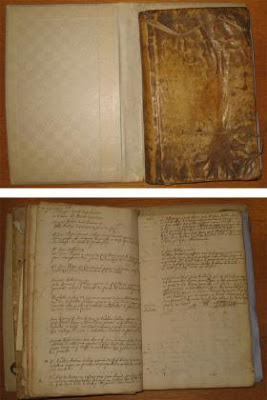Books Bound in Human Skin
Boston Athenaeum
A morbid secret lies hidden within the beautiful walls of the Boston Athenaeum
Fallschirmjager:
Having visited the Mütter Museum at the College of Physicians of Philadelphia this past weekend and having looked at the examples of volumes bound in tanned human flesh they have on display had me wanting to update this post with an addendum about…you guessed it, books bound in human flesh. So without further ado.
Happening to come across the other day the catalog of a book auction in 1864, when a book on the Constitution of the French Republic, bound in human skin in the year 1793, was offered for sale, a book lover was prompted to inquire whether the human skin had ever been put to such a use before or since.
The inquiry led to a number of surprising revelations. It was not merely during the excesses of the French Revolution that such things were done, but as long ago as the thirteenth century he found there were in existences several such books, including a Latin Bible very handsomely engrossed upon a woman’s skin. In 1765 the “French Encyclopedie” gave a recipe for tanning human skin, and stated that M. Sue, a surgeon in Paris, had presented the King with a pair of slippers made of human skin, according to this prescription.
During the reign of Napoleon III, a copy of the Decretals, written on human skin, was found in the library of the Sorbonne and transferred to the Tulleries. John Ziska, the one-eyed chief of the Hussites, ordered in his will that his skin should be tanned and made into a drum. “The noise which my skin will make,” said he, “will frighten away all our enemies and put them to flight.”
It was, however, at the time of the French Revolution that this art was developed to its greatest extent. A man presente himself one day at the bar of the Convention and announced that he had devised a simple and original scheme for procuring leather in abundance. The Committee of Public Safety granted him a concession of the Castle of Meudon, where he carried on his work with a certain amount of secrecy. In return for the concession of the members of the committee were privileged to be among the first to wear top boots made of human skin.
The tannery of Meudon acquired considerable notoriety. A great number of books were bound with the leather turned out there, and Phillipe Egalite, Duke of Orleans, encouraged the tannery by wearing a pair of breeches made there with human skin at a ball in Palais-Royal. The republican General Beysser, who made himself a name by his ferocity in the wars of La Vundee, set the fashion of wearing similar trousers in the army, always wearing a pair at battles and at reviews.
An old soldier who had taken part in most of the campaigns of the French Revolution, told a writer of memoirs in the middle of this century that he had owned a specially fine garment of this kind, made entirely of one piece. An architect, who was one of the leaders of the infamous Black Band of France in 1823, which for a long time terrorized the country districts in the West of France, wore a jacket made of human skin, comely and exceedingly comfortable.
The infamous Saint-Just, when at the height of his power during the Reign of Terror, caused a young and beautiful girl, who had refused his advances, to be arrested and sent to the scaffold. After the execution he obtained possession of the body, flayed himself and had the skin tanned and made into a waste-coat, which he wore till the day of his death. The tannery of Meudon and its imitators carried on the process on an extensive scale, and must have made a good deal of money by tanning the skins of the victims of the Revolution for every sort of commercial purpose.
Oil extracted from human bodies was also placed upon the market and sold.
Since those days the process has naturally become much rarer, but Dibdin relates how at a comparatively recent date a collector possessed a treatise on sport bound in stag’s skin; a copy of Fox’s “History of James II.,” bound in fox’s skin and a book on anatomy bound in human skin. In 1837 the narrative of the adventures of a highwayman was bound in his own skin at Boston, Mass., with inscription in Latin outside, “This book was bound in the skin of Walton.”
